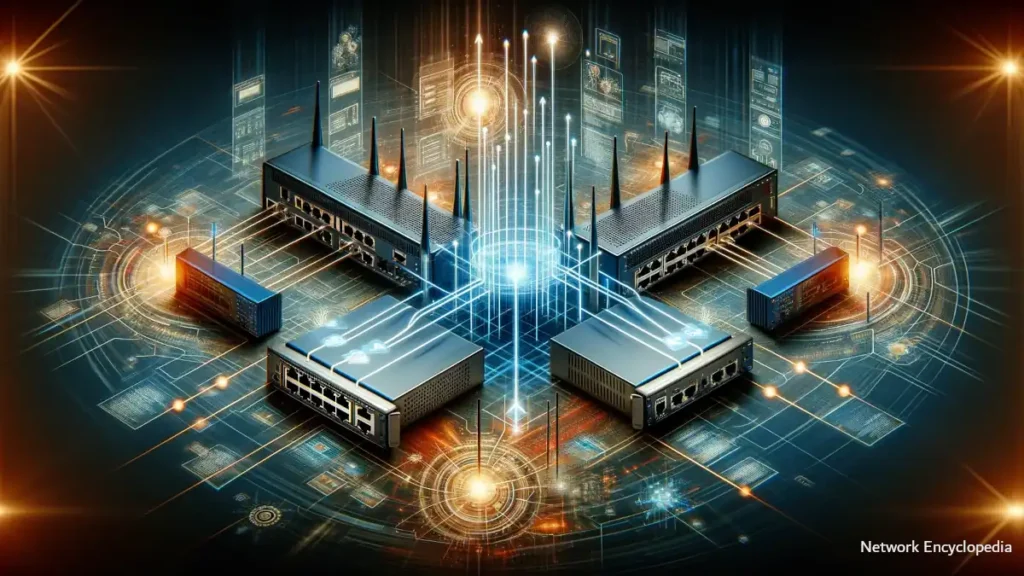The concept of disaggregation has been a transformative force in the realm of computing resources, offering a fresh lens through which we can reassess and reconstruct the foundational elements of networking. Historically, networks have been synonymous with integrated appliances—devices designed, sold, and used as indivisible units of hardware and software. These devices, characterized by their proprietary interfaces and unique feature sets, have long been the bedrock upon which networks are built and operated. However, as we pivot towards a more disaggregated approach, inspired by the evolution seen in computing, we embark on a journey that promises to redefine the architecture of networks and the paradigms of network engineering.
Table of Contents:
- What is Network Disaggregation?
- Driving Forces Behind Disaggregation
- Implementation and Impact
- Final Thoughts on Disaggregation
- References

1. What is Network Disaggregation?
Network disaggregation refers to the separation of the network’s hardware components from its software elements, a strategy mirroring the transformation witnessed in the computing and application domains. This methodology challenges the traditional appliance-based model by promoting flexibility, customization, and efficiency. It addresses critical issues inherent in the conventional system, such as overengineering, dependency on vendor-specific solutions, and the complexity of service and support arising from the unique combination of features each network appliance offers.
2. Driving Forces Behind Disaggregation
The movement towards network disaggregation is fueled by several key advantages that have been instrumental in its adoption across compute resources and applications:
- Decoupling of Hardware and Software: This foundational step allows for the independent evolution of hardware and software components, facilitating innovation and adaptation in each domain without mutual constraints.
- Commoditization of Hardware: By detaching the software from the hardware, the latter can be standardized across various functionalities, leading to cost efficiencies and broader applicability.
- Specialization of Software: Focused development on services and microservices enhances the network’s ability to meet specific operational requirements, echoing the principles of scale-out design in computing.
- Resource Pooling: Aligning with the compute sector’s approach, networking can benefit from dynamically allocated resources, optimized to address particular challenges through scalability and flexibility.
3. Implementation and Impact
Disaggregating a network entails reevaluating the relationship between software components such as routing protocols, the Routing Information Base (RIB), and the physical hardware itself, including ASICs and physical network interfaces. This separation not only allows for more rational and cost-effective network design but also enables operators to tailor their systems to their specific needs, choosing which components to own, which to purchase, and how to best align their network architecture with their business objectives.
The practical benefits of network disaggregation include enhanced operational stability, the ability to upgrade hardware without overhauling the entire system, and the capacity for software to evolve in tandem with changing business requirements. Moreover, by focusing on the removal of unnecessary features and optimizing the network for specific applications, engineers can significantly improve performance and efficiency.
4. Final Thoughts on Disaggregation
As we look towards the horizon, it’s clear that disaggregation is set to play a pivotal role in the evolution of networking. This paradigm shift offers a pathway to more adaptable, efficient, and cost-effective network infrastructures, capable of meeting the rapidly changing demands of the digital age.
Disaggregation in networks has driven many more changes in the world of IT and network management. For instance, another form of disaggregation in the network is to divide the services offered by the network itself from the network appliance.
5. References
- “Of Mice and Elephants“, November 1, 2013, networkheresy
- “Understanding Network Failures in Data Centers: Measurement, Analysis, and Implications“, August 2011, Phillipa Gill, Navendu Jain, Nachi Nagappan
- “Computer Networking Problems and Solutions: An innovative approach to building resilient, modern networks“, December 2017, Russ White, Ethan Banks